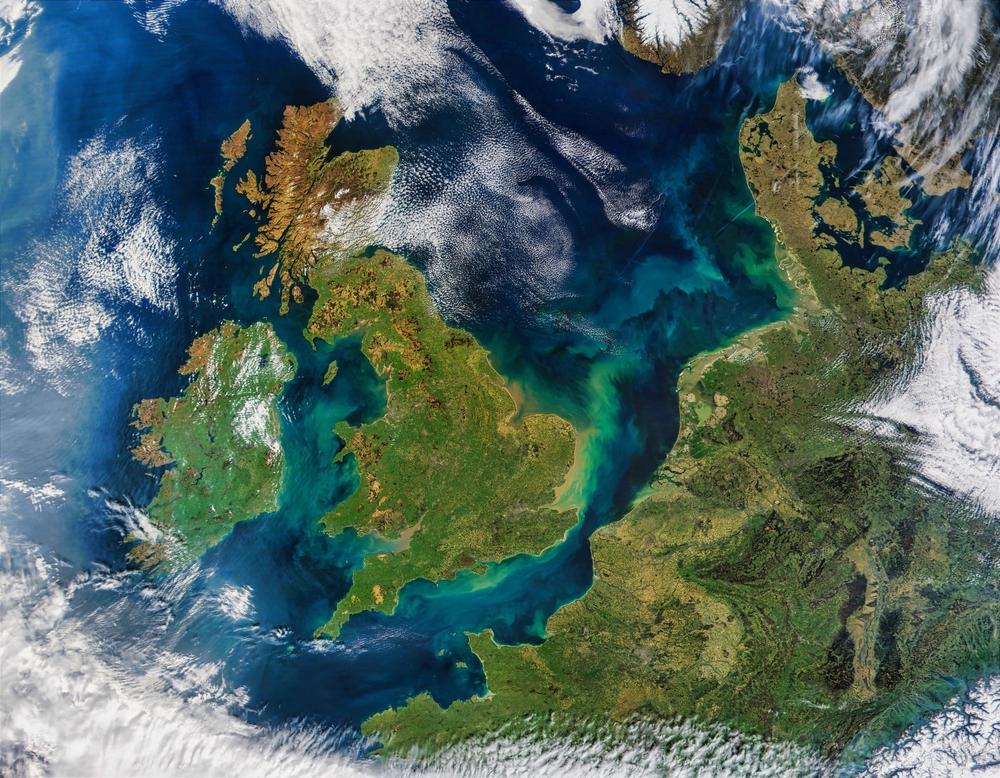
Our environment is changing due to rising temperatures and the signs are now impossible to ignore, even here in County Durham
As the planet warms, we’re seeing more extreme weather, shifting seasons, and growing pressure on our wildlife, health, and day-to-day life. Events like wildfires sweeping across Europe or floods in the UK might feel far away from some of us, but the truth is, they’re already hitting close to home. If we don’t act now, we’ll be left responding to much bigger problems.
The Science Behind It
The Earth’s climate has always changed over time, but what we’re seeing now is different. Since the Industrial Revolution in the 1800s, human activity has rapidly increased the amount of greenhouse gases, like carbon dioxide and methane, in the atmosphere.
These gases act like a blanket, trapping heat from the sun and warming the planet just like a greenhouse traps heat for your tomatoes, or how insulation keeps our homes warm. This is called the “greenhouse effect.”
As global temperatures rise, we’re seeing more heatwaves, heavier rainfall, stronger storms, longer dry spells, and changes in nature that affect our everyday lives.
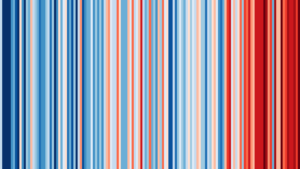
How is Climate Change Affecting County Durham and the UK?
Unpredictable Weather Patterns
Climate change doesn’t just mean hotter summers. It also brings heavier rain, stronger winds, sudden storms and even cold snaps in winter.
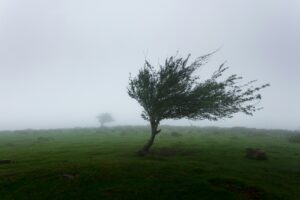
On Monday 4 August, Storm Floris brought wind speeds of up to 85 miles per hour across the North. These kinds of storms are becoming more frequent and can damage homes, knock down trees, cause power cuts, and harm local wildlife.
At the other extreme, droughts are becoming more common across the UK from Yorkshire to East Anglia and parts of Wales. These long dry spells reduce water availability, dry out the land, and create ideal conditions for wildfires to start and spread quickly.
In County Durham, we’re already seeing the impacts of both extremes. Before improvements were made, flash floods were a problem in places like Chester-le-Street, where heavy rainfall quickly overwhelms drains. These floods damage roads, homes, and businesses, and put added pressure on emergency services.
Not-So-Natural Disasters: The Rise in Wildfires
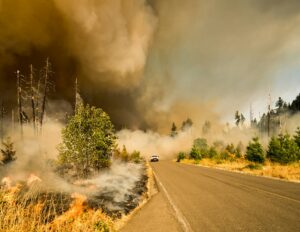 Wildfires need the right conditions: heat, dry ground, and strong winds. As droughts and heatwaves increase, these conditions are being met more often even here in the UK.
Wildfires need the right conditions: heat, dry ground, and strong winds. As droughts and heatwaves increase, these conditions are being met more often even here in the UK.
So far this summer, fires have broken out in Scotland, Wales, and the North of England, with dry grasslands and high winds fuelling the flames. In County Durham, fire crews are now planning for wildfires as part of their official emergency response. The County Durham and Darlington Fire and Rescue Service now includes wildfire risk in its action plans.
The Met Office has also issued multiple fire severity warnings across England this summer, especially in areas hit by drought.
Further afield, Cyprus was hit by a massive wildfire in July, forcing evacuations near Limassol. Just weeks later, France experienced its own major wildfire in the south. Fires in Greece, Spain, and Italy are also burning more often and for longer while Canada and the U.S. continue to see some of the worst fire seasons on record.
Scientists now say that human-caused climate change has made extreme wildfires at least six times more likely during heatwaves.
Wildfires don’t just damage land and threaten wildlife, they also create smoke that affects air quality and health, especially for people with asthma or heart conditions. They tie up emergency services and cause long-term damage to nature.
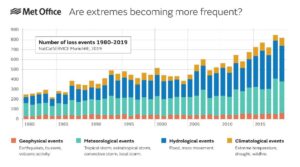
This graph from Munich RE shows events causing loss are becoming more frequent.
Warming Seas and Coastal Change
It’s not just what’s happening on land. The seas around the UK are also getting warmer and fast.
 According to the UK Met Office, average sea surface temperatures (SSTs) around the UK have increased by around 0.7°C since 1981. During heatwaves, that number can jump even higher. In 2023 and 2024, parts of the North Atlantic saw temperatures up to 4–5°C above normal, breaking records and creating marine heatwaves that lasted for weeks.
According to the UK Met Office, average sea surface temperatures (SSTs) around the UK have increased by around 0.7°C since 1981. During heatwaves, that number can jump even higher. In 2023 and 2024, parts of the North Atlantic saw temperatures up to 4–5°C above normal, breaking records and creating marine heatwaves that lasted for weeks.
These warmer seas are driving big changes:
- New marine species like anchovies, squid, and jellyfish are showing up more often in UK waters.
- Cold-loving species like cod are disappearing from southern waters, affecting fish stocks and food supply.
- Heat-sensitive habitats like seagrass beds and kelp forests are under threat, which has knock-on effects for coastal wildlife and water quality.
Warmer seas also add fuel to storms, raise sea levels, and increase coastal erosion.
Along the County Durham coast, erosion is a growing concern with cliffs, beaches, and coastal paths wearing away faster due to rising sea levels, more frequent storms, and wave pressure. This threatens wildlife, heritage sites, and local communities that rely on our coast for recreation, tourism, or fishing.
Farming and Food Under Pressure
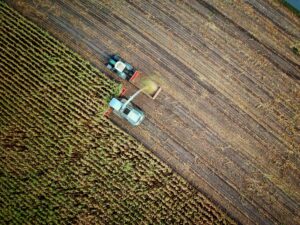 Changing weather patterns are also affecting the way we grow food. Crops need consistent temperatures and rainfall to thrive, but unpredictable weather makes that harder.
Changing weather patterns are also affecting the way we grow food. Crops need consistent temperatures and rainfall to thrive, but unpredictable weather makes that harder.
Farmers across County Durham are already adapting. They’re using better water management, improving soil health through regenerative practices, tracking seasonal changes, and investing in tools to help protect their crops from future weather shocks.
These actions are essential to protect not only their businesses, but also the future of local food.
Wildlife on the move
Animals, insects, and plants are all feeling the effects of rising temperatures.
 In our gardens, we may notice plants blooming earlier or seeing insects that didn’t used to be common like the Wasp Spider or Red Admiral butterfly. These changes may seem small, but they show how species are reacting to new conditions.
In our gardens, we may notice plants blooming earlier or seeing insects that didn’t used to be common like the Wasp Spider or Red Admiral butterfly. These changes may seem small, but they show how species are reacting to new conditions.
Some are struggling to survive. Others are moving further north in search of more comfortable habitats.
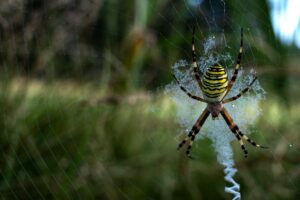
We’re also seeing more activity along our shores and in our coastal waters. Jellyfish, dolphins, and even sharks are being spotted more frequently in UK waters including up north as the seas become warmer and more suitable for these species. While these sightings might seem exciting, they’re also a sign that marine ecosystems are shifting in response to climate stress.
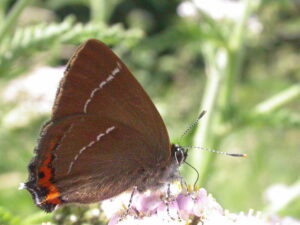
In County Durham, important species like brownfield butterflies, moths, and the White-letter Hairstreak butterfly are at risk. Across the UK, wildlife populations have already dropped by around 19% since 1970 and that number continues to rise.
So What Can We Do?
Climate change may be global, but its impacts are local right here in County Durham.
From stronger storms and floods to food pressures, warming seas, and shifting wildlife, the effects are already being felt. But the future isn’t fixed. The more we understand what’s happening, the more we can adapt and help reduce the risks.
Start by asking yourself:
- What small changes can I make to help reduce my impact, protect my community, and support nature?
- Whether it’s using less water during dry spells, planting for pollinators, supporting local farmers, walking more, or switching to clean energy every action matters.
- We’re all part of nature’s story. The question now is: how will we respond?
We would love to hear from you
Share your stories, experiences, and photos of nature, and send us a few lines on how you are helping protect our environment in County Durham. Whether it is something you do personally, a community project you may be involved in, a business change or action, or even a great photo of nature. We want to celebrate and share your efforts and views.
Send us your stories or photos (with a short explanation) by emailing climatecountydurham@durham.gov.uk or by filling in our Get in Touch form and help inspire others across our beautiful county to take action. And do not forget to sign up to our Climate Change and Carbon Reduction Pledge.

